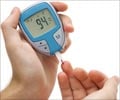Highlights:
- HbA1c variability or changes in HbA1c values per visit is a strong, independent predictor of all‐cause mortality in type 2 diabetes (T2D)
- HbA1c variability appears to be even more powerful in predicting death compared with HbA1c averages
- More research is needed to understand the exact involvement of HbA1c variability in this relationship
Read More..
While a regular glucose monitor measures the blood sugar at a particular point of the day, the HbA1c test shows the average amount of glucose attached to hemoglobin for the past three months. The three-month average coincides with the lifespan of a typical red blood cell.
HbA1c is also known by other names: A1c, glycohemoglobin, glycated hemoglobin, Decoding HbA1c Test for Blood Sugar, glycosylated hemoglobin.
Difference Between Mean HbA1c and HbA1c Variability
In this study, the average of 3 to 5 HbA1c measures was taken over a 2-year period before enrollment from 9 centers that included 8290 patients. This average was used to calculate average HbA1c written as HbA1c – MEAN.HbA1c variability or variability of HbA1c over time defined as changes in HbA1c values per visit was measured as the standard deviation within the individuals (HbA1c-SD) that was adjusted for the number of HbA1c assessments (HbA1c-AdjSD) and coefficient of variation (HbA1c-CV, the ratio of standard deviation to the mean - HbA1c‐SD to HbA1c‐MEAN ratio).
Earlier research had suggested that variability in the levels of blood glucose of T2D patients could be the cause of adverse outcomes in them.
Study
Patient data for the study was collected from an observational, prospective, cohort study, designed initially to determine the effect of estimated glomerular filtration rate on morbidity and mortality in patients with T2D.The average HbA1c and the HbA1c variability were measured using a subset of this group, from 9 participating centers as mentioned before.
- The results were obtained for 99.5% of the participants (n=8252) and showed that all-cause mortality was only associated with HbA1c-SD, after adjusting for confounders.
- HbA1c-SD was a more powerful predictor of all-cause death than HbA1c-MEAN.
- Also, mortality risk increased above the median value and decreased below the median value of HbA1c-SD.
- Orsi E, Solini A, Bonora E, et al. “Haemoglobin A1c variability is a strong, independent predictor of all-cause mortality in patients with type 2 diabetes”. Diabetes Obes Metab. 2018;1–9. https://doi.org/10.1111/dom.13306
Source-Medindia
















